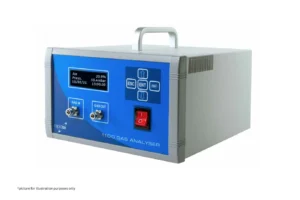
Calibration Gas
Product Information
Cambridge Sensotec supplies bespoke gas calibration kits for our O2 and SF6 gas analysers, as well our gas detection & MAP product ranges. Each kit has the appropriate calibration gases and flow regulator supplied in a convenient carry/storage case.
The gas cylinders themselves are small lightweight NRC (non-returnable) canisters that can be disposed of in local land-fill sites, and the gas mixtures themselves are fully traceable and supplied with a calibration certificate. Our gas kits can be shipped to many countries throughout the world for our overseas customers.
The gas is supplied in small, easy to manage cylinders (40 x 10cm, 1.2 kg) containing 34, 58 or 110 litres of gas. These are connected using a regulator that releases gas at 0.5 litres per minute (C10 valve fitting). Gases, regulators and cases are available to purchase separately if required.
In many industrial applications inert gas is used to remove oxygen (O2) and prevent any unwanted reactions between the gas and the product. In most applications, nitrogen (N2) is the preferred inert gas to us since it is cheap, easy to purify and readily available in large quantities; especially in liquid form. However, argon (Ar) may be preferred in some applications since, unlike nitrogen, it is a noble gas and therefore completely inert and unreactive. Argon is more expensive than nitrogen so is only used when deemed necessary for the application.
This is particularly relevant in additive manufacturing (AM) applications where laser melting of metals such as titanium and aluminium take place. The high laser melting temperatures mean that it is possible for the metals to form nitrides in the melting process, which is detrimental to the material properties of the finished product. In this example, argon would be the preferred inert gas used since it prevents both oxidation and nitriding occurring
New for 2024, Cambridge Sensotec now offers both N2 and Ar gas calibration choices for our range of zirconia O2 sensors. For the latter, the suffice -Ar is added to part code to identify the calibration gas used. Although the behaviour of the zirconia sensor is almost identical in both Ar and N2, subtle differences in the thermal characteristics of the two gases means that a precise calibration, with a very accurate r-squared, is more consistently achieved when the calibration gas matches that used in the process. In each case, a minimum of three bespoke calibration gas mixtures are used across the span of the sensor scale to guarantee a perfect calibration no matter what the preferred carrier gas is.
Note that replacement cylinders and other gas concentrations are also available.





